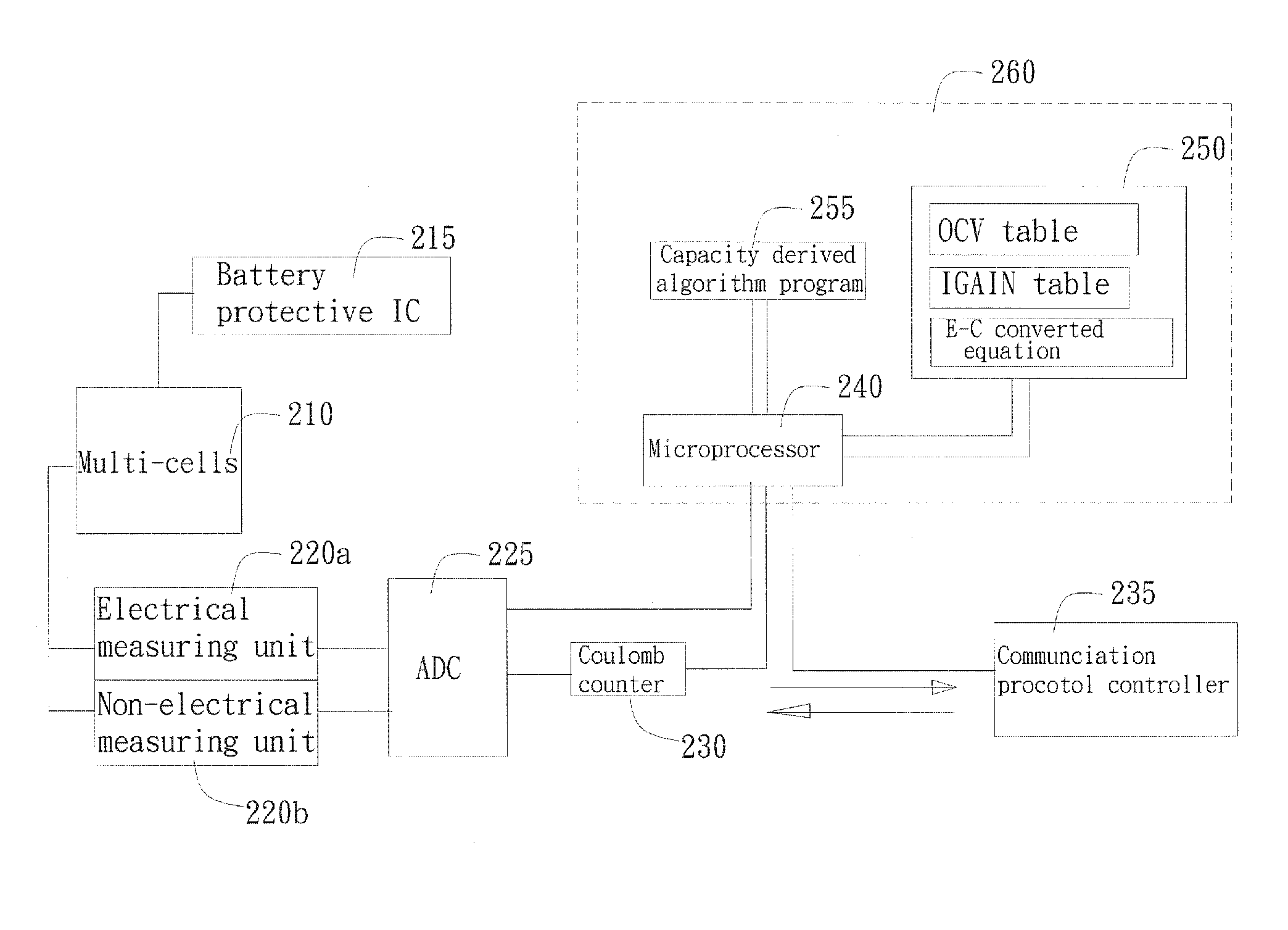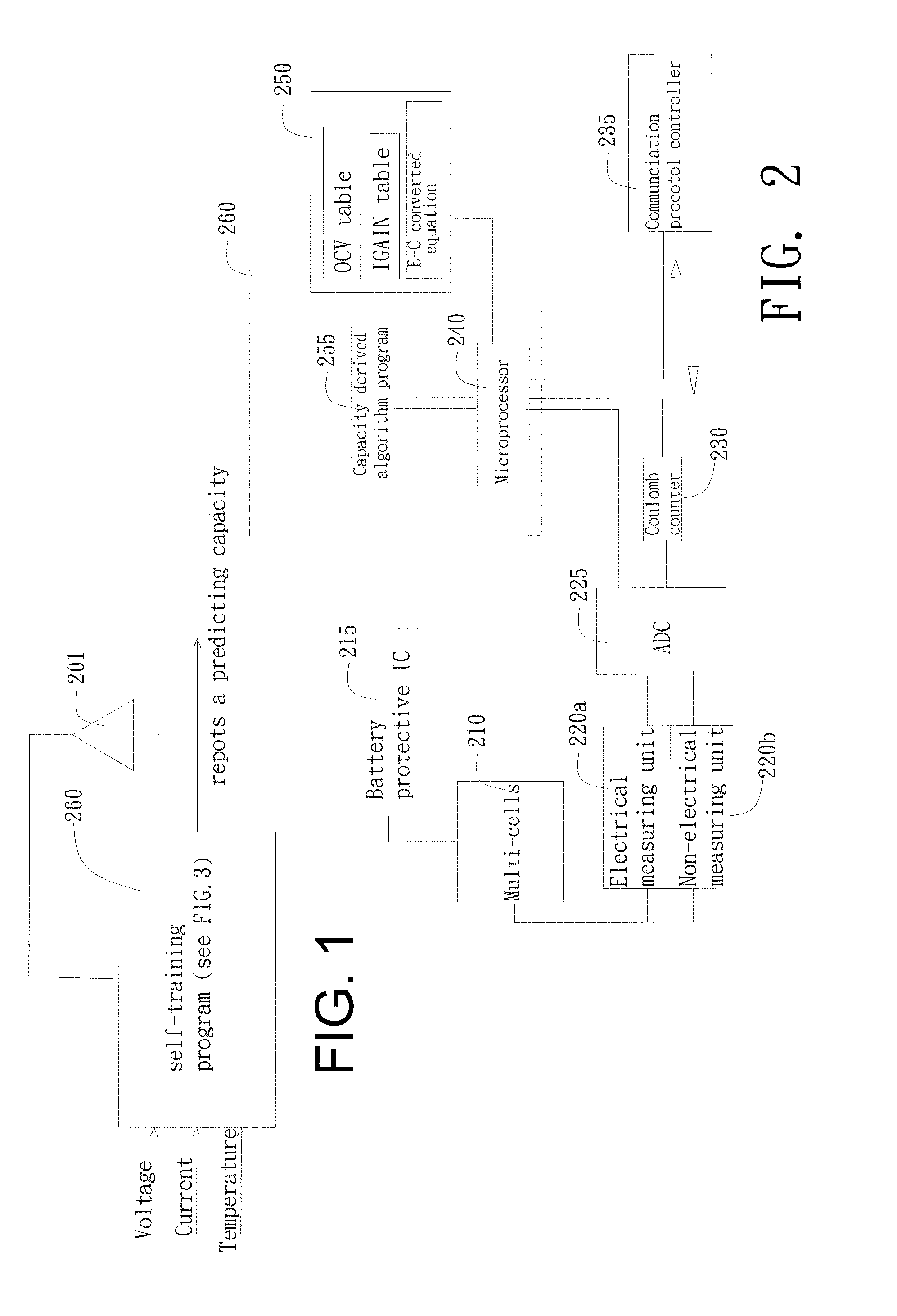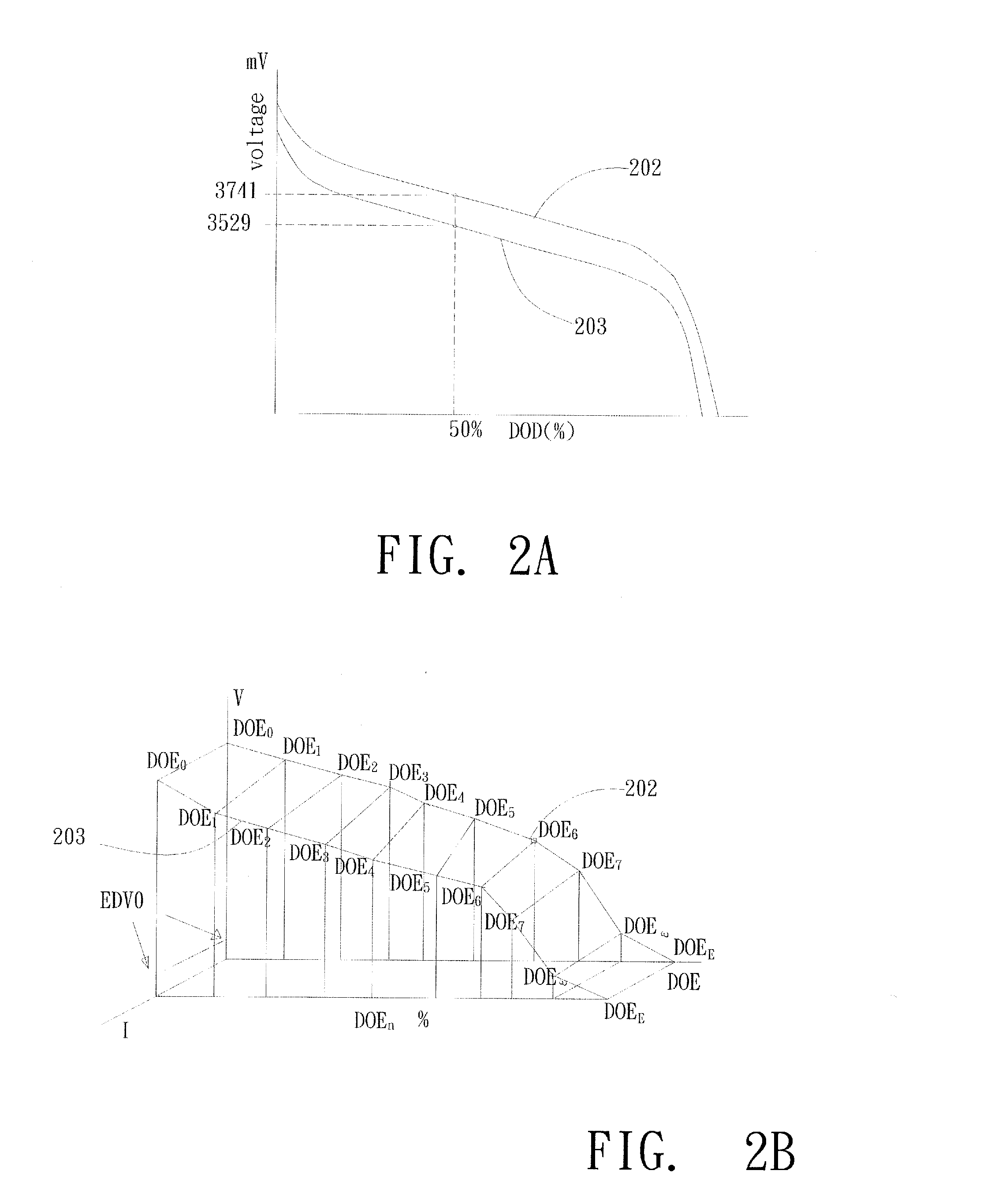Device for Depth of Energy Prediction of a Battery and a Method for the Same
a technology for depth of energy prediction and battery, which is applied in the direction of secondary cell servicing/maintenance, instruments, electrochemical generators, etc., can solve the problems of high cost of high-quality battery management system, limited electrical capacity, and long time-consuming
- Summary
- Abstract
- Description
- Claims
- Application Information
AI Technical Summary
Benefits of technology
Problems solved by technology
Method used
Image
Examples
Embodiment Construction
[0021]As aforementioned conventional techniques, no matter what the methods of predicting cell capacity according to prior art including the dynamic discharging voltage cutoff method or open-circuit voltage method is taken, the whole processes of them demand the battery being fully charging and discharging repeatedly for hundreds of times and still if the end user does not often do the fully charging and discharging process, then the database will not be updated, results in predicting incorrectly predicting the residual capacity. The problem will be more serious while the material of the battery has aged.
[0022]The present invention provides an algorithm to predict remaining capacity of a battery by using the cell temperature (surface temperature), accessed load current, and cell voltage as input parameter, as is shown in FIG. 1. A device 260 for predicting a remaining capacity may embed in a battery pack or externally connected to the battery pack, as shown in FIG. 2. The device inc...
PUM
 Login to View More
Login to View More Abstract
Description
Claims
Application Information
 Login to View More
Login to View More - R&D
- Intellectual Property
- Life Sciences
- Materials
- Tech Scout
- Unparalleled Data Quality
- Higher Quality Content
- 60% Fewer Hallucinations
Browse by: Latest US Patents, China's latest patents, Technical Efficacy Thesaurus, Application Domain, Technology Topic, Popular Technical Reports.
© 2025 PatSnap. All rights reserved.Legal|Privacy policy|Modern Slavery Act Transparency Statement|Sitemap|About US| Contact US: help@patsnap.com



